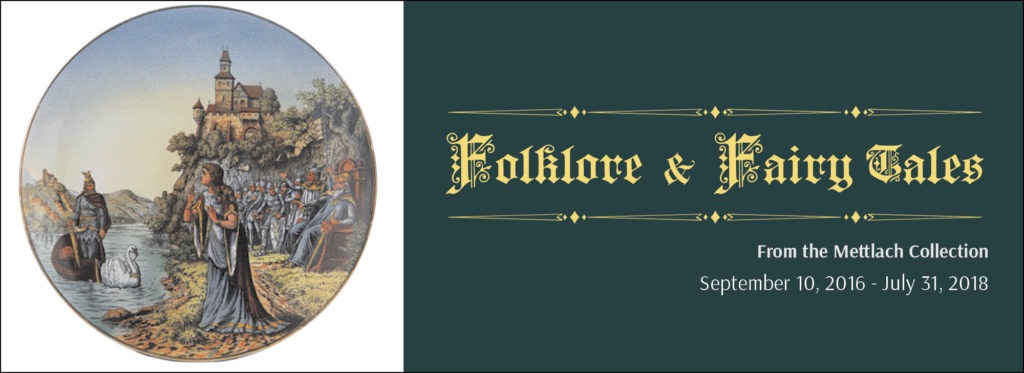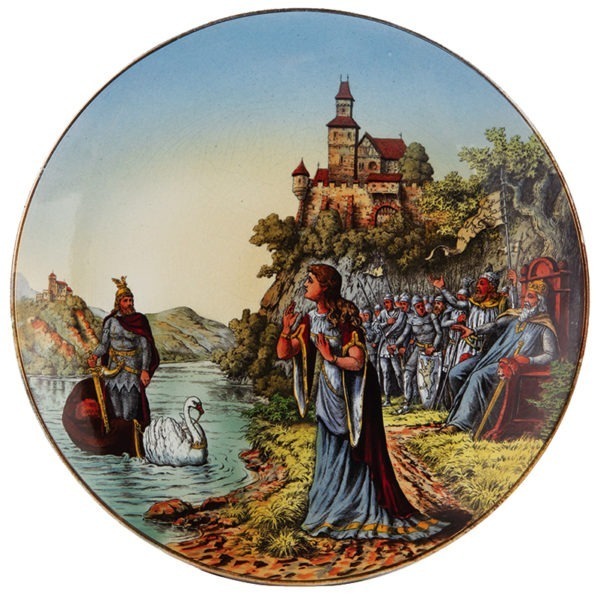
| On View: | September 10, 2016–July 31, 2018 |
Folktales have been found in cultures throughout the world. Many folktales emerged simultaneously and independently of one another, suggesting that cultures shared parallel narratives.
The Roman historian Strabo recorded one of the earliest versions of Cinderella in the first century B.C. The classic fairy tale Hansel and Gretel was based on real events during the Great Famine of 1315 A.D. In the late 1600s, French author Charles Perrault wrote stories derived from folktales, including Little Red Riding Hood, Cinderella, Puss in Boots, The Sleeping Beauty, and Bluebeard.
Around 1440, the invention of the printing press by Johannes Gutenberg improved the speed of printing books. The Industrial Revolution and advancements in printing technologies increased the quantity of books as well as reduced the cost of producing books. These innovations enabled writers–such as Jacob and Wilhelm Grimm–to collect, document, and share classic folklore and fairy tales with a much larger audience.
The Mettlach: Folklore and Fairy Tales exhibition includes 140 ceramic objects depicting scenes from folklore and fairy tales. The pieces on display include Mettlach steins, beakers, and plaques.
The History of Mettlach
In 1748, François Boch began manufacturing ceramic dinnerware in France. In 1809, the Boch family purchased a former Benedictine abbey in Mettlach, Germany, a village located on the Saar River near the border of France. Jean-François Boch, François Boch’s grandson, designed many of the machines used to improve production at the new facility.
In 1791, Nicholas Villeroy acquired an earthenware factory in Germany. Villeroy brought in specialists from England and France to modernize production, and around 1815 they developed a printing process to create decals that could be fired onto clay to produce vibrant prints under ceramic glaze.
The two families merged their ceramic companies to create Villeroy and Boch (V&B) in 1836. The Mettlach factory reached peak production around 1880, but it began to decline in the early 1900s due to a downturn in the economy and the impacts of World War I. Today, V&B continues to produce bathroom wares, tableware, and other ceramics.
